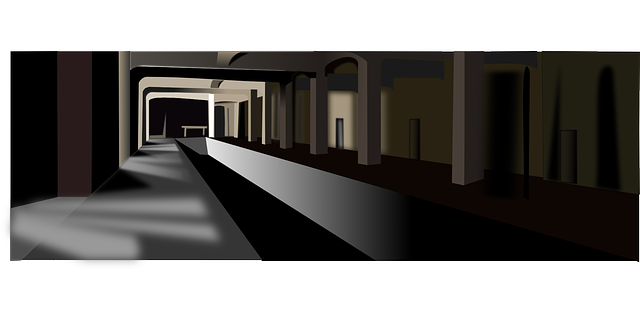Vacuum excavation offers a safe, eco-friendly alternative to traditional digging methods, ideal for urban areas with dense underground infrastructure. Utilizing powerful vacuums and advanced technologies like Ground Penetrating Radar (GPR), it accurately maps and avoids utilities, minimizing damage and risks while preserving landscapes and reducing environmental impact. Strict safety protocols, including operator training and high-quality equipment, ensure reliable performance in safe digging services, enhancing sustainability in construction projects.
“Unveiling the secrets of efficient and environmentally conscious vacuum excavation, this article explores a sustainable alternative in the realm of construction. ‘Understanding Vacuum Excavation’ segments introduce the technique’s basics and its multitude of benefits. We then delve into ‘Environmentally Friendly Practices’, highlighting methods to minimise ecological impact. ‘Safety Measures for Safe Digging Services’ emphasises protection during operations. Furthermore, ‘Advanced Technologies’ showcases innovations revolutionising sustainable digging, ensuring precision and efficiency without compromising safety.”
Understanding Vacuum Excavation: The Basics and Benefits
Vacuum excavation, also known as vacuum trenching or non-destructive digging, is a method that uses powerful vacuums to extract soil and rock from underground without causing damage to buried utilities or structures. This technique has revolutionized safe digging services by offering an environmentally friendly alternative to traditional methods like mechanical excavation. The process involves attaching a vacuum head to a truck-mounted machine, which then sucks up the soil through a network of pipes, leaving behind intact infrastructure.
One of the key benefits of vacuum excavation is its precision and safety. It allows for accurate identification and mapping of underground utilities, reducing the risk of accidental damage or disruptions. This method is particularly useful in urban settings where buried cables, pipes, and foundations are closely spaced, making safe digging a paramount concern. By minimizing soil disturbance, vacuum excavation also helps preserve the natural landscape and reduces the potential for site contamination, contributing to more sustainable construction practices.
Environmentally Friendly Practices in Vacuum Excavation
Vacuum excavation, also known as vacuum trenching or non-destructive digging, offers a safe and environmentally friendly alternative to traditional excavation methods. By using powerful vacuums to suck up soil and underground materials, this technique minimizes damage to infrastructure and reduces the risk of accidents. One of its key environmental benefits is the prevention of soil erosion and disturbance, which can preserve local ecosystems and habitats.
In addition, vacuum excavation generates less dust and noise pollution compared to heavy machinery, making it a preferred choice for urban and sensitive areas where safety and tranquility are paramount. The use of safe digging services equipped with advanced vacuum technology ensures that construction projects can be completed with minimal impact on the surrounding environment, contributing to a more sustainable future.
Safety Measures for Efficient and Safe Digging Services
In the realm of efficient vacuum excavation, safety is paramount for ensuring smooth operations and mitigating risks associated with underground utilities. Before initiating any excavation project, thorough planning and assessment are crucial to identify potential hazards and implement appropriate measures. Companies specializing in safe digging services employ advanced technology, such as ground-penetrating radar (GPR), to locate and map underground lines, pipes, and cables accurately. This non-invasive technique allows operators to navigate with precision, avoiding accidental damage or disruptions.
Safety protocols extend beyond initial assessment, with strict adherence to industry standards and best practices. Operators are trained in the latest equipment use, emergency response procedures, and hazard communication to ensure everyone involved remains safe during excavation. Additionally, employing high-quality, durable vacuum excavators equipped with advanced safety features, such as fail-safe mechanisms and automated shutdowns, further enhances the safety of safe digging services. Regular maintenance and inspections are also vital to keep equipment in top condition, preventing malfunctions and ensuring optimal performance during operations.
Advanced Technologies Enhancing Sustainable Digging Techniques
Advanced technologies are revolutionizing the field of vacuum excavation, offering safer and more environmentally friendly methods for digging. These innovative techniques have become a cornerstone in the industry, as they minimize ground disturbance and reduce the risk of damage to underground infrastructure—a critical aspect for safe digging services. By employing precision technology and advanced machinery, operators can now accurately identify and avoid buried utilities, such as water, gas, and electrical lines.
One prominent technology is the use of Ground Penetrating Radar (GPR) which provides real-time data on the subsurface, allowing for informed decision-making during excavation projects. Additionally, smart sensors and drones are being utilized to monitor digging operations, ensuring compliance with environmental standards and safety protocols. These cutting-edge tools collectively contribute to more efficient and sustainable digging practices, paving the way for a greener future in construction and infrastructure development while enhancing the capabilities of safe digging services.
Vacuum excavation is a game-changer in the field of safe digging services, offering both efficiency and environmental sustainability. By adopting advanced technologies and eco-friendly practices, this method ensures minimal damage to landscapes while providing quick and precise results. As the demand for sustainable construction continues to grow, efficient vacuum excavation techniques will play a pivotal role in shaping a greener future for the industry, ensuring safe and environmentally conscious digging practices.
